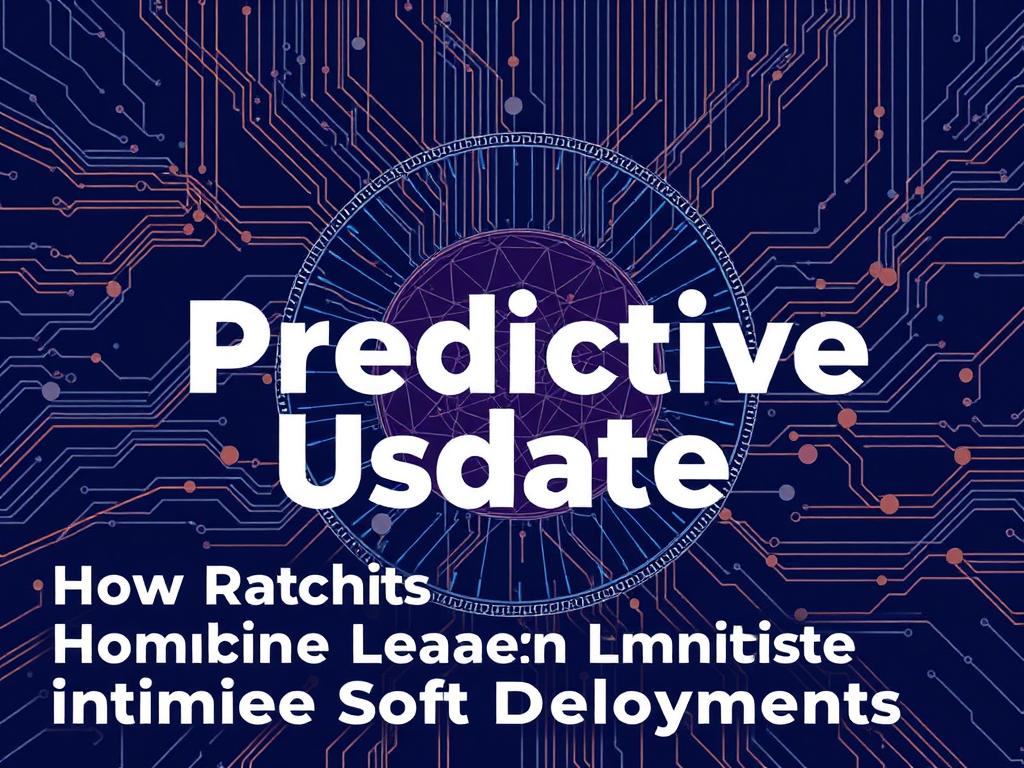Understanding Soft Deployments in Software Development

When companies release software updates, the process can be tricky. Pushing new features or bug fixes directly to all users at once risks unexpected crashes, user dissatisfaction, or even data loss. This is where soft deployments come in. Unlike hard rollouts that immediately update the entire user base, soft deployments involve gradually releasing updates to a smaller subset of users before a full launch. This strategy minimizes risks by allowing developers to monitor performance and catch issues early.
Soft deployments have become a standard approach in modern software development because they provide flexibility and control. However, managing them efficiently requires insight into when and where to deploy, how to predict user response, and how to adapt on the fly. This is where machine learning comes into the picture, revolutionizing the way soft deployments are handled.
What Are Predictive Updates?
Predictive updates refer to the use of machine learning algorithms to anticipate the outcomes and performance of software deployments before and during their rollout. Instead of relying solely on human intuition or post-deployment analytics, predictive models analyze vast amounts of data—such as user behavior, system logs, historical update success rates, device types, and network conditions—to forecast which updates will succeed, where issues might arise, and how users might react.
By applying these predictions proactively, developers can optimize the timing and scope of soft deployments. This helps avoid wasted resources on problematic updates, reduces downtime, and improves overall user satisfaction.
How Machine Learning Powers Predictive Updates
Machine learning works by recognizing patterns and making data-driven predictions. In the case of soft deployments, several models might be trained on historical update data. For example:
- Classification models: These predict whether an update will be successful or likely to fail based on similar past deployments.
- Regression models: These estimate the severity of potential issues or the expected user engagement post-update.
- Anomaly detection: Identifies unusual patterns during rollout that might signal emerging problems.
These models continuously learn as new data comes in, improving the accuracy of their forecasts. By combining these insights, deployment teams gain a clearer picture of how to proceed with their soft updates.
Benefits of Using Machine Learning for Soft Deployments

Integrating machine learning into soft deployments offers multiple advantages. Here’s a breakdown in table format highlighting the key benefits:
| Benefit | Description | Impact |
|---|---|---|
| Risk Reduction | Predictive models identify potential failure points before full deployment. | Minimizes crashes and bugs reaching end users. |
| Resource Optimization | Efficiently allocate testing and monitoring efforts where they are most needed. | Reduces unnecessary costs and effort. |
| Faster Rollouts | Confidently increase deployment speed based on predicted success. | Speeds up delivery of new features and improvements. |
| Improved User Experience | Ensures smoother updates with less disruption. | Builds loyalty and lowers churn rates. |
| Data-Driven Decisions | Empowers teams with actionable insights rather than guesswork. | Enhances decision-making accuracy. |
Real-World Scenarios Where Predictive Updates Shine
Imagine a mobile app developer preparing to update their application. They have data from previous updates, including crash reports, user feedback, and device compatibility. Using a machine learning model, they predict that on certain older devices the new update is prone to causing performance issues. Consequently, the developer targets the update initially to modern devices only, postponing a full rollout. This way, the team mitigates risks while gathering more data to enhance the update for older devices.
Another example is in cloud services, where thousands of servers might receive an incremental software patch. Machine learning algorithms forecast which server clusters are more vulnerable to errors due to varying network conditions or hardware differences. The deployment system adjusts the rollout schedule accordingly, soft deploying updates first to the least risky clusters and pushing updates to riskier ones later after more testing.
Implementing Predictive Updates: Best Practices
If you’re considering adopting predictive updates for your soft deployments, there are a few best practices to keep in mind:
- Gather Comprehensive Data: The quality and volume of data your machine learning models use are crucial. Collect logs, telemetry, user behavior, and device stats consistently.
- Train and Validate Models Regularly: Machine learning models can degrade over time if not updated. Retraining helps maintain predictive accuracy.
- Integrate Feedback Loops: Use deployment outcomes to continuously improve your predictions. This iterative approach makes your system smarter.
- Maintain Human Oversight: Predictions should augment—not replace—human judgment. Teams need to be prepared to override automated decisions when necessary.
- Communicate Transparently: Inform stakeholders about the predictive system’s role, benefits, and limitations to build trust.
Challenges to Anticipate
While the benefits are clear, some challenges accompany predictive updates:
- Data Privacy: Ensuring user data is protected during model training and analysis.
- Model Bias: Avoiding biases that can arise from unbalanced historical data.
- Integration Complexity: Combining machine learning systems with existing deployment pipelines requires technical expertise.
- Change Resistance: Getting stakeholders comfortable with AI-driven deployment decisions may take time.
Anticipating these issues ahead of time ensures a smoother transition to predictive updates.
The Future of Software Deployment with Machine Learning

As artificial intelligence algorithms become even more sophisticated, the potential for predictive updates will only expand. We might see fully autonomous deployment systems that smartly decide when, where, and how to roll out updates with minimal human involvement. Real-time predictive monitoring will detect issues before users notice them, enabling instant rollback or fixes.
Moreover, as data volumes grow exponentially, machine learning will handle complexities humans cannot easily manage, optimizing deployments over a huge variety of environments, devices, and user segments. This future promises safer, faster, and more user-centered software evolution.
Conclusion
Predictive updates, powered by machine learning, mark a significant step forward in optimizing soft deployments. This innovative approach leverages historical data and real-time analytics to forecast risks and opportunities associated with software rollouts. By doing so, it enhances the reliability, speed, and user satisfaction of updates, while freeing teams from guesswork and guess-driven errors. While challenges around data privacy, model bias, and integration exist, thoughtful implementation and continuous refinement can overcome them. As the tech world leans ever more on AI, embracing predictive updates will likely become essential for organizations committed to seamless, efficient, and user-friendly software delivery.

